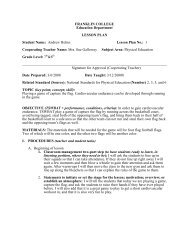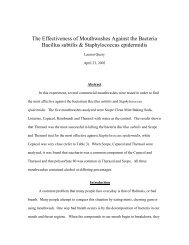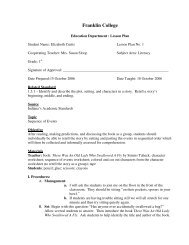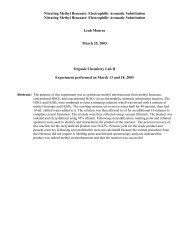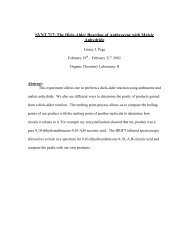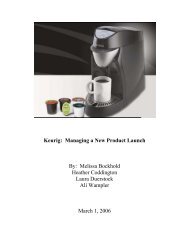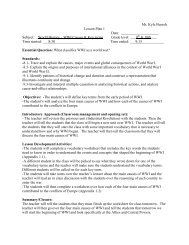Melissa Bockhold Heather Coddington - Franklin College
Melissa Bockhold Heather Coddington - Franklin College
Melissa Bockhold Heather Coddington - Franklin College
You also want an ePaper? Increase the reach of your titles
YUMPU automatically turns print PDFs into web optimized ePapers that Google loves.
I. INTRODUCTION<br />
In 1999, Seagate Technology, Inc., decided that in order to increase their market<br />
value, they needed to make some big changes. Due to their undervalued stock price,<br />
Seagate decided to undergo a leveraged buyout (LBO) with Silver Lake Partners L.P.<br />
During this time, four main concerns arose among the parties involved:<br />
• How can Seagate address the company’s low stock price?<br />
• How should the buyout be financed? What should the capital structure look like?<br />
• How much should investors pay to acquire Seagate’s disk drive operations?<br />
• How can Seagate address VERITAS Software Corporation’s needs and concerns?<br />
After analyzing the case and talking to executives at Silver Lake and Seagate, we<br />
think that Seagate’s low stock price is best addressed by a leveraged buyout with a new<br />
capital structure composed of 45% equity and 55% debt. Furthermore, we have found<br />
that the company is worth approximately $2 billion in the buyout. Finally, VERITAS<br />
should agree to participate in the deal because they will also win by retiring a portion of<br />
their stock.<br />
conclusions.<br />
The subsequent sections of this report will further explain how we arrived at these<br />
3




